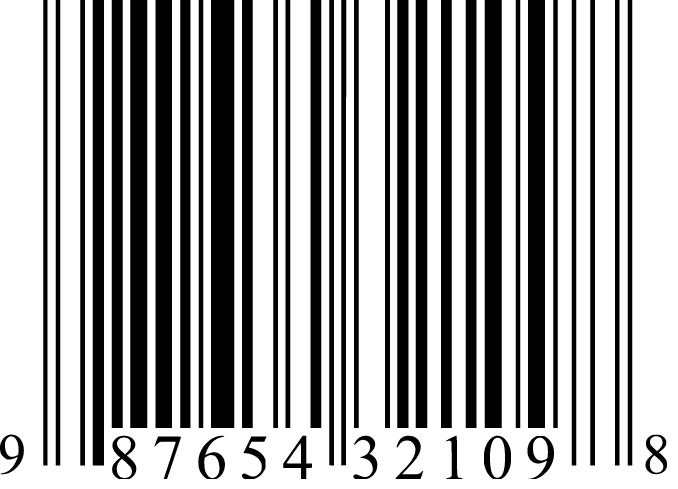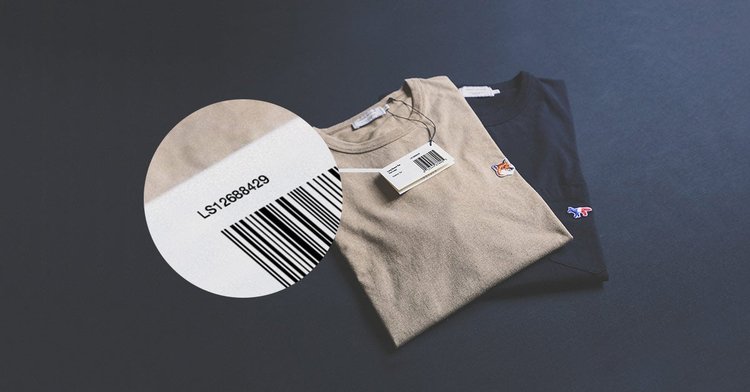It’s time to understand stock-keeping units (SKUs) and make the jump to a barcode system for your inventory management. An SKU inventory strategy may seem difficult or overwhelming to implement, but it’s critical that you take back the time and eliminate the potential for human error from physical inventory counting.

An SKU can be the number and/or the corresponding line that signifies exactly what a product is, including critical details. Image source: Author
Continue reading to learn all about SKUs, how they’re the foundation of your inventory management software, and why they’ll help to elevate your operational efficiency.
Overview: What is a stock-keeping unit (SKU)?
An SKU is most commonly represented as a scannable barcode that corresponds to a number that is typically around eight digits. SKU numbers and their corresponding barcodes tie to your backend product profile, representing price, location information, and essential product details (size, color, manufacturer, etc.).
SKU numbers can be applied to all types of inventory. They’re most commonly used for highlighting tangible, consumer retail products, but SKUs can also represent intangible products, such as services, warranties, and hourly work.
SKU vs. UPC: What's the difference?
Who knew managing inventory requires so much alphabet soup? You’re just getting the hang of SKU, and now we’re throwing another acronym at you. But it’s important to understand the difference between an SKU and its often misunderstood counterpart, UPC.
UPC stands for Universal Product Code, and, just as it sounds, it’s a mechanism for manufacturers to assign a single code shared across their retailers and sellers. A UPC lookup can cut across different retail businesses to find a single product. SKUs, on the other hand, are typically unique to a retailer, meaning that the same product will have a different SKU at different retailers.
The reason for having both codes (and others) is to lend organizational advantages to different stakeholders, such as retailers, manufacturers, resellers, and more.
What are SKUs used for?
SKUs are used to improve all types of inventory management strategies. From a 10,000 feet view, SKUs are simply data-packed codes that contain critical product information for retailers to immediately understand the product.

SKUs will differentiate between obviously unique and seemingly identical products. Image source: Author
Retail stores, catalogs, online merchants, e-commerce consultants, warehouse managers, and order fulfillment organizations all use SKUs to process payment, pull, organize, and move the right products from A to B.
Scannable SKUs integrate into retail point of sale (POS) software and e-commerce solutions so that processing orders and taking inventory counts are a breeze. Every time a product is scanned for purchase, the POS automatically adjusts the inventory count for all products with that same SKU.
SKUs also work with inventory control systems to record pertinent purchase information, such as the final sale price and the date it sold.
Here are three SKU use cases to further highlight the importance of these seemingly simple codes.
1. Improve inventory tracking
SKUs are a critical building block for barcode inventory systems. SKUs primarily empower retailers to identify and track products, including total inventory counts, maintaining accurate inventory turnover ratios, and better understanding the speed and direction of inventory flow.
Retailers can use inventory management software to program automatic actions whenever an SKU’s total count falls below a designated threshold. These actions include sending a new product order to the manufacturer or analyzing stock levels at other stores to see if they have a surplus.
SKUs and inventory systems also do the opposite by halting automated reorders if there’s a surplus of the product due to a prior overorder or a lack of expected sales.
2. Personalize product recommendations
Another increasingly valuable benefit SKUs provide is the ability to personalize product recommendations.
These online recommendations most often surface in emails and display ads that follow you across the web. These personalized recommendations increase the chances of purchase by engaging consumers with the exact products they viewed on your site or similar products to those they already purchased.
SKUs make this possible by containing all the relevant information about the products being viewed and recommended. For example, you already know those shoes you’re looking at online correspond to a unique SKU. That SKU also tells the online merchant’s web platform everything it needs to identify similar shoes, products from the same brand, products of the same material or the same color, etc.
3. Forecast future sales
Forecasting is an essential capability that successful retailers must master, and SKUs are the foundation on which forecasting occurs.
Retailers, online merchants, and manufacturers all rely on tracking weekly, monthly, and yearly changes in sales volume using SKUs. So it makes sense that these same SKUs would also be used to forecast future sales for an upcoming time period.
This type of forecasting is especially useful for successfully navigating highly seasonal products, such as holiday items, winter wear, summer wear, and more. Your SKU-based forecasting helps you assign the correct lead time for ordering seasonal products to maximize your resource allocation.
How an SKU works
SKUs essentially operate as product identifiers, and they also differentiate one product from another. SKUs are basically just codes that record and help you and your inventory system identify critical product information.
Let’s say you needed to create your own SKUs for your cookware store, starting with your cutlery offerings. You would A to signify cutlery, with A1 being forks, A2 being spoons, A3 being knives, and so on. You could then use B to signify product material, with B1 being stainless steel, B2 being silver, B3 being wood, and so on. You could then include numbers, such as 001, 002, 003, etc., to signify the particular series of cutlery so that someone could easily purchase a full set from the same series.
So, in this particular case, A3B2004 would be a knife made of silver that’s from the same series as a spoon with the SKU A2B2004.
You can then extrapolate this out so that the SKU for a wooden plate would be C1B3031, where C signifies tableware, 1 signifies plates, B3 still represents the material (wood in this case), and 031 is the series this plate is from.
SKUs are more powerful than they seem
It should now be clear that SKUs are an amazingly powerful and critical component for successful inventory management. There are some technical features you may need to overcome, and the codes may seem like a forgein language at first, but it’s essential that you implement a SKU system. Make it your own and make it make sense for your business, but make sure you do it.
Our Small Business Expert
We're firm believers in the Golden Rule, which is why editorial opinions are ours alone and have not been previously reviewed, approved, or endorsed by included advertisers. The Ascent does not cover all offers on the market. Editorial content from The Ascent is separate from The Motley Fool editorial content and is created by a different analyst team.